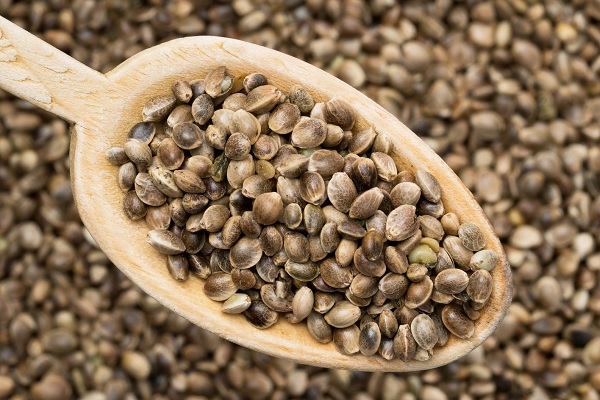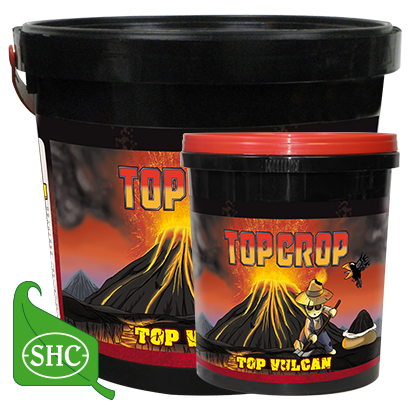

Potassium (a mineral element) triggers the activation of different growth-related enzymes, important in many chemical processes taking place during flower production.Cannabis fertilizers with a high phosphorus ratio are often used as flowering nutrients, meant for the mid–late stages of growth. The most critical time for cannabis plants to utilize phosphorus is during the beginning of their blooming process (first white hairs), as this is when a big energy change happens in the plant. High phosphorus availability to plants can lead to additional flower (bud) sites and a healthy root system.
 Synthetic derivatives of P are made by treating rock phosphate with either sulfuric acid or phosphorus acid. Organic sources of P include soft rock phosphate, bat guano, steamed bone meal, fish bone meal, and crushed granite.
Synthetic derivatives of P are made by treating rock phosphate with either sulfuric acid or phosphorus acid. Organic sources of P include soft rock phosphate, bat guano, steamed bone meal, fish bone meal, and crushed granite. 
Phosphorus lets plants use the energy harnessed by photosynthesis to drive their metabolism. It is important in cell division and the development of new tissue, also associated with complex energy transformations in the plant. Phosphorus (a mineral element) is a component of plants’ complex nucleic acid structure, which regulates protein synthesis.Cannabis fertilizers with a high nitrogen ratio are usually ‘veg’ nutrients intended for the early stages of growth.

This is why only moderate nitrogen levels are applied to blooming cannabis plants to keep their buds hard, dense, and compact. High nitrogen fertilizers have a pronounced effect on cannabis plants, often triggering vertical growth.
Synthetic derivatives of N include formulations of urea and ammonium nitrates. Organic sources of N are plant litter, compost, manure, blood meal, feather meal, etc. Nitrogen is the most utilized nutrient of a plant’s life-cycle, especially during its early stages of growth. Nitrogen (a gas) is a major component of amino acids (the building blocks of proteins) and chlorophyll (the energy substance made by plants through photosynthesis). To figure out how much K that is you can multiply the weight by the percentage: 50 kg x 0.12 = 6 kg of K. For example, a 50-kg bag of 12-24-12 fertilizer is composed of 12% N, 24% P, and 12% K. The numbers represent the percentage of a nutrient a fertilizer is made of. NPK are the three numbers you see labeled on the front of commercial fertilizers. NPK (short for Nitrogen, Phosphorus, and Potassium) are the major nutrients that plants absorb through their roots or vascular tissue. What are the three numbers labeled on fertilizers? These nutrients are mostly obtained through a plant’s roots but can also be absorbed through tissue (i.e., foliar feeding). The other three nutrients are Nitrogen (N), Potassium (P), and Phosphorus (K). Respiration combines oxygen and the food created during photosynthesis to produce usable energy for plants. Oxygen (O) – Along with what has been described above, plants consume oxygen through their pores-even at night. As plants absorb water, they split the water molecules into hydrogen and oxygen using the energy from the sun. Hydrogen (H) – Hydrogen is a part of water ( H 2O). Carbon Dioxide (CO 2) – Plants absorb CO 2 from the air, combining it with water and light to make carbohydrates-a process more commonly known as photosynthesis. There are six major nutrients that cannabis plants require to grow-three of which are obtained from the air and water: Underfed plants have a weak immune system due to a lack of nutrients. The buds develop sparsely and produce lower quality and yield than well-fed plants. Underfed cannabis plants are often slow to grow, stunted, yellowing, and frail. Well-fed plants have a stronger immunity to disease than underfed plants. Well-fed cannabis plants are green and healthy, leading to increased flower production and higher yields of bigger buds. The best nutrients for cannabis are, in fact, the nutrients which the plant uses to support growth. Cannabis requires large amounts of mineral nutrients to compose its leaves and dense flowers. What Nutrients Does Cannabis Need to Grow?








 0 kommentar(er)
0 kommentar(er)
